
views
Meeting the Enlistment Requirements

Complete high school and get your diploma. The Army has a minimum education requirement and you’ll need a high school diploma. If you’re still in school, then make sure you finish and graduate to meet this requirement, especially if you want to attend flight school. It helps to do well in high school as well, especially in your math and science courses. Flight school involves a lot of classroom instruction, and a good understanding of math, physics, and other science fields will be a big help. You could still join the Army with a GED instead of a high school diploma, but it does hurt your chances of acceptance and you might not be eligible for Warrant Officer training. If possible, it’s best to complete high school and get your diploma.
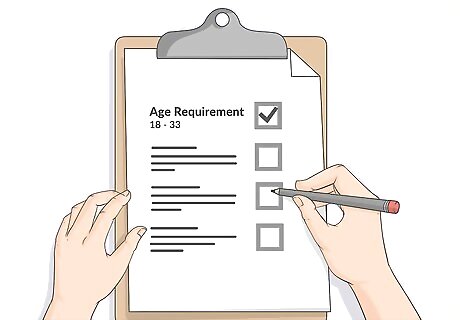
Enlist between the ages of 18 and 33. In general, the Army’s age requirement is that you have to be at least 18 and no older than 33 to enlist. As long as you’re between these ages, then you can enlist and start the process to reach flight training. If you’re 33 or 34, you may be able to get a waiver. Ask your superior officer or recruiter about your options in this case. You can still join the Army as old as 35, but you probably won’t be accepted for flight school.

Meet the Army’s physical requirements to qualify. The physical requirements for pilots are the same as the Army’s overall requirements. You have to be within a specific weight and height range to qualify. You’ll also need at least 20/50 vision in each eye, and wear lenses to correct your vision to 20/20. In general, men need to be between 60–80 in (150–200 cm) and 100–250 lb (45–113 kg). Women need to be between 58–80 in (150–200 cm) and 90–236 lb (41–107 kg). If you can’t reach these physical requirements but still want to serve your country, the Army does have many other civilian jobs that you could apply for. Talk to a recruiter to see what your options are.
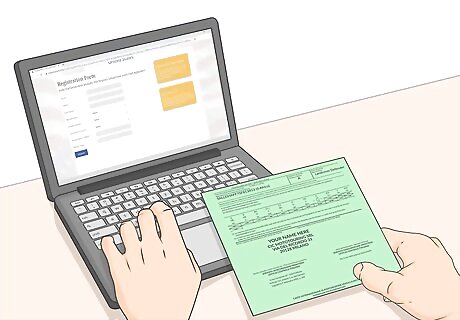
Apply for American citizenship before you enlist if you aren’t a citizen. In general, the Army requires recruits to be US citizens before joining. However, you could still enlist if you haven’t yet obtained citizenship. Just make sure you meet the citizenship requirements and submit the application before joining. That way, you can begin your training during the application processing. You do still need a Green Card and permanent resident status to qualify for the Army, so make sure you complete all of this before applying.

Score at least 110 on the ASVAB exam to qualify for officer training. The Armed Services Vocational Aptitude Battery, or ASVAB, is an exam that all new Army recruits have to take. The exam measures your critical reasoning, science, math, electronics, and grammar knowledge. While recruits only need a score of 31 to pass, you’ll need a top score to qualify for Warrant Officer Candidate School (WOCS). Study hard and get at least a 110 to meet the requirement for officer and flight school.
Getting to Flight School
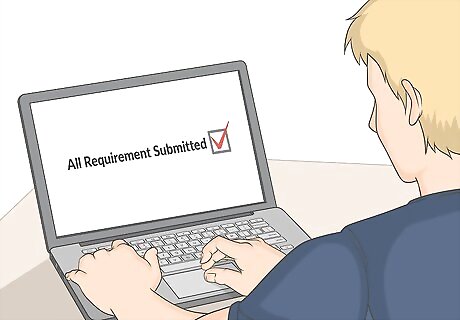
Apply to Warrant Officer Candidate School. All Army pilots have to complete Warrant Officer Candidate School (WOCS) before attending flight school to become pilots. As long as you scored at least a 110 on the ASVAB, you qualify for WOCS and can submit your application when you enlist. Your recruiter can walk you through this process and help you with your application. If you don’t apply for WOCS right when you enlist, you need to have at least 12 months left on your enlistment contract to qualify for WOCS. If you have less than this, you’ll have to re-enlist first.
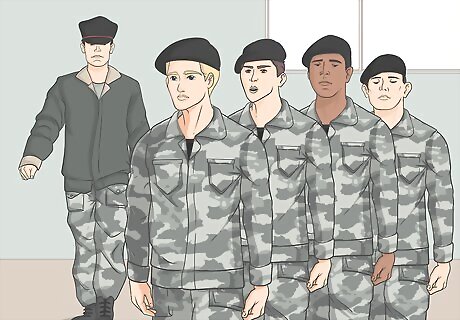
Complete 9 weeks of basic training. All Army recruits have to complete and pass basic combat training before moving on, and you will too. Basic training is a 9-week program at one of several Army forts throughout the country. You’ll learn critical skills like combat, teamwork, Army procedures, and physical conditioning to prepare you for your Army career. At the end, you’ll have to pass a few physical and mental tests to qualify for graduation. If you pass, you’ll officially be a member of the Army. It’s best to start preparing yourself for basic training by getting in good physical shape and learning as much as you can about the Army. This will make your time in basic training much easier. Only about 15% of recruits fail basic training, so you have a good chance of passing as long as you prepare yourself.
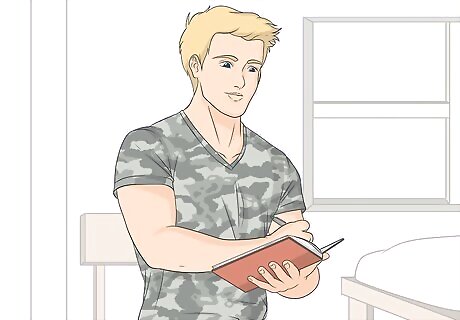
Review the Army's drills and guidelines before starting officer school. After basic training, your next step is Warrant Officer Candidate School (WOCS). This is a physically and mentally intensive program, so make sure you're as prepared as possible before starting. The Army recommends reviewing all of its training, drill, ceremony, and navigation manuals before attending WOCS. This way, you'll be prepared for the knowledge portions of officer school. If there is any gap time between basic training and starting WOCS, make sure you workout regularly to stay in top physical shape. You'll have to pass more physical tests in officer school and you'll have trouble if you let yourself get out of shape.
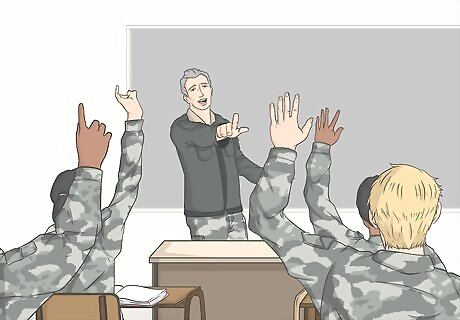
Report to Fort Rucker, Alabama, for WOCS. All pilot candidates have to pass Warrant Officer Candidate School after basic training, which is held at Fort Rucker, AL. This 6-week program trains aspiring pilots and other technical officers for their role in the Army. You’ll receive a packet outlining the process and your instructions for reporting to WOCS when you’re accepted. If you have any questions, ask your recruiter. Be sure to review the Army's checklist for everything you need to bring with you to WOCS. You can only enter WOCS without prior Army service if you plan on becoming a pilot. Other service members must be at least a Staff Sergeant/E-6 to qualify.
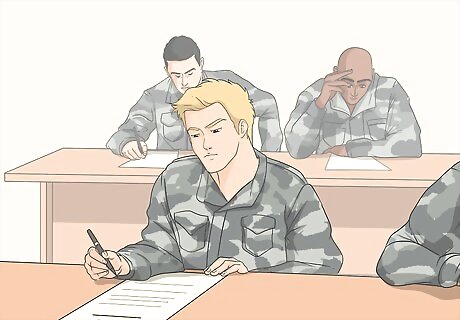
Pass the WOCS program to become a Warrant Officer. The 6 weeks at Warrant Officer school train you to become a technical specialist in the Army. You’ll receive a combination of specialized classroom instruction along with further physical training. After completion of this course, you’ll be a Warrant Officer and can attend flight school. Recruits at WOCS attend different programs based on their intended career. You’ll be placed in a program for aspiring pilots looking to attend flight school. Navigation is an important part of WOCS, especially for aspiring pilots. Review the Army manual on field navigation so you’re well-prepared for this training.
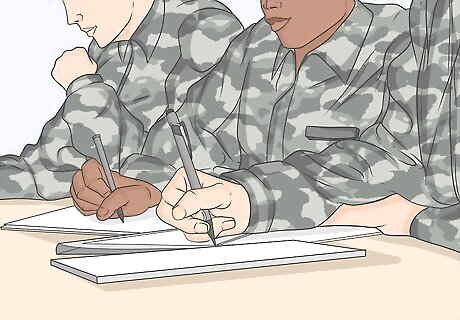
Earn a qualifying score on the SIFT exam for flight school. The SIFT exam, Selection Instrument for Flight Training, is your final step before flight school. This exam measures all of the technical flight knowledge you gained during WOCS. It’s scored from 20-80, and you need at least a 40 to pass and qualify for flight school. Study hard and ace this exam to continue with your pilot training. The Army provides a study guide for the SIFT, so be sure to work with that guide to do as well as possible. In general, you can only take the SIFT exam twice. If you pass on your first try, then you don’t have to take it again. If you fail twice, then you can’t take it again.
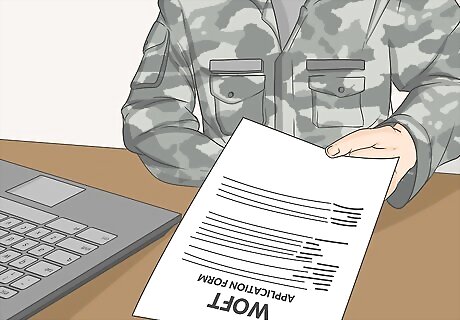
Apply to Warrant Officer Flight Training to continue on your path. Your final step to becoming an Army pilot is WOFT, Warrant Officer Flight Training. This is a long program and takes about a year of training. As long as you get a passing score on your SIFT, you can send in your application and start the last phase of your training. WOFT is also at Fort Rucker.
Completing Flight Training
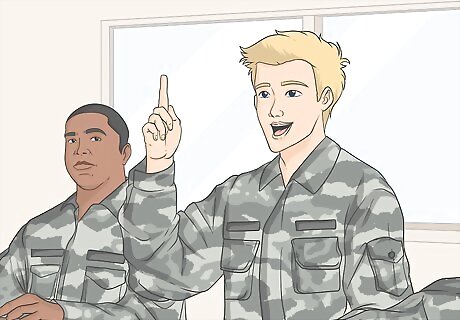
Pass the classroom portion of flight instruction. All WOFT candidates start with classroom training. In this program, you’ll learn about flight physics, systems, emergency procedures, and navigation. This is all crucial if you want to be a successful pilot, so pay close attention and pass your classroom instruction sections. Since you’ve already gone through a lot of classroom instruction in WOCS, you should be ready for this portion of your training. Pay attention and draw on all the classroom skills you’ve already gained to get to this point.

Rack up 7.5 hours of practice time on a helicopter flight simulator. Once your classroom training is over, you’ll start flight training on a simulator. You’ll learn basic takeoff and landing skills, flight maneuvers, and controls. After 7.5 hours on a simulator, you can move on to practicing in a real helicopter.
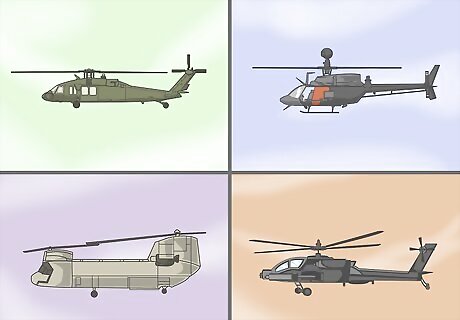
Choose 1 of 4 helicopters that you want to specialize with. The Army uses 4 main helicopters, and you’ll have to pick one to specialize in. They’re all used for different tasks, so be sure to consider what type of job you want to do before picking a helicopter. The OH-58 Kiowa is a small reconnaissance aircraft used for scouting. The UH-60 Blackhawk is a transport helicopter used for evacuations and search-and-rescue missions. The AH-64 Apache is an attack helicopter that’s used in combat missions. The CH-47 Chinook is a large transport helicopter used to move supplies.
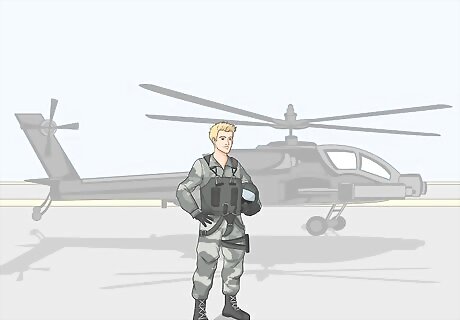
Practice on your chosen helicopter for 70 to 150 hours. Once you choose your helicopter and mission type, then you’ll spend a lot of time practicing in that helicopter to become an expert. Depending on your helicopter, you’ll need between 70 and 150 hours of flight time to pass WOFT. After that, you’re qualified for graduation. You’ll not only practice flying the helicopter itself, but also using all the equipment you might use in flight like night vision goggles. There will be different procedures and maneuvers for different helicopters. If you fly an Apache, you’ll probably practice selecting and strafing targets, while with a Blackhawk you’ll probably practice landing in a hostile zone to evacuate injured soldiers.
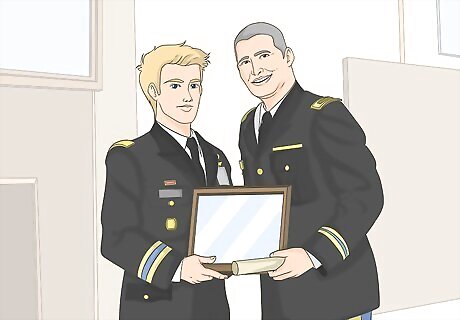
Graduate from WOFT to become a helicopter pilot. When you spend the required amount of time in flight training, you then qualify to earn your wings. After a graduation ceremony, you’ll officially be a Warrant Officer pilot and can start your exciting new career as an Army helicopter pilot.


















Comments
0 comment